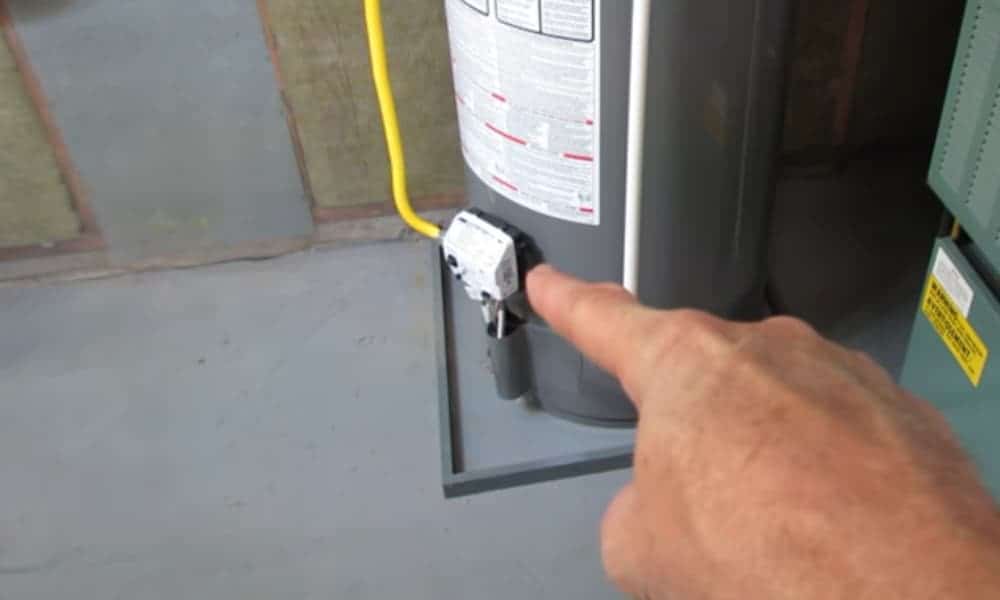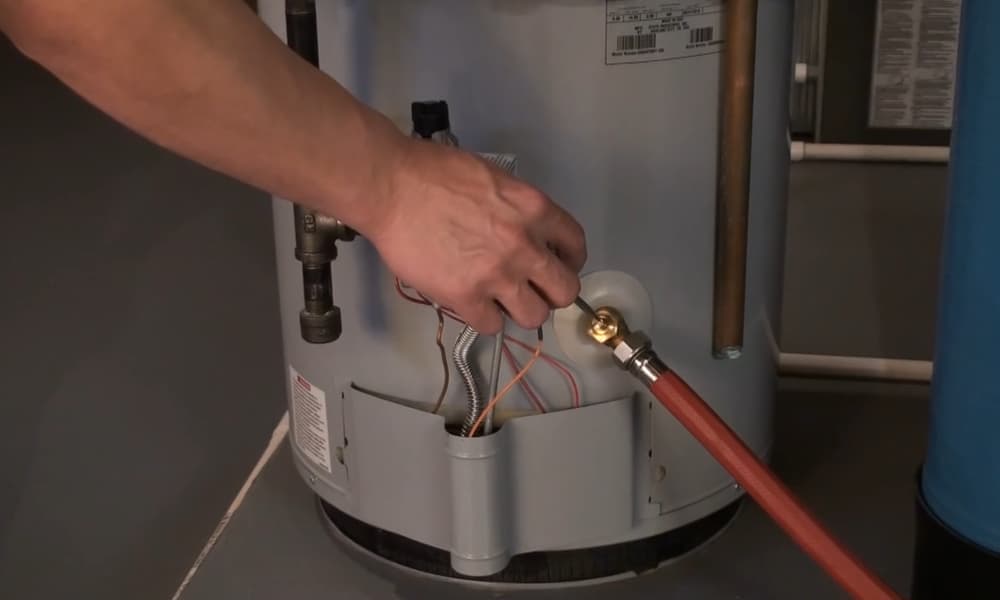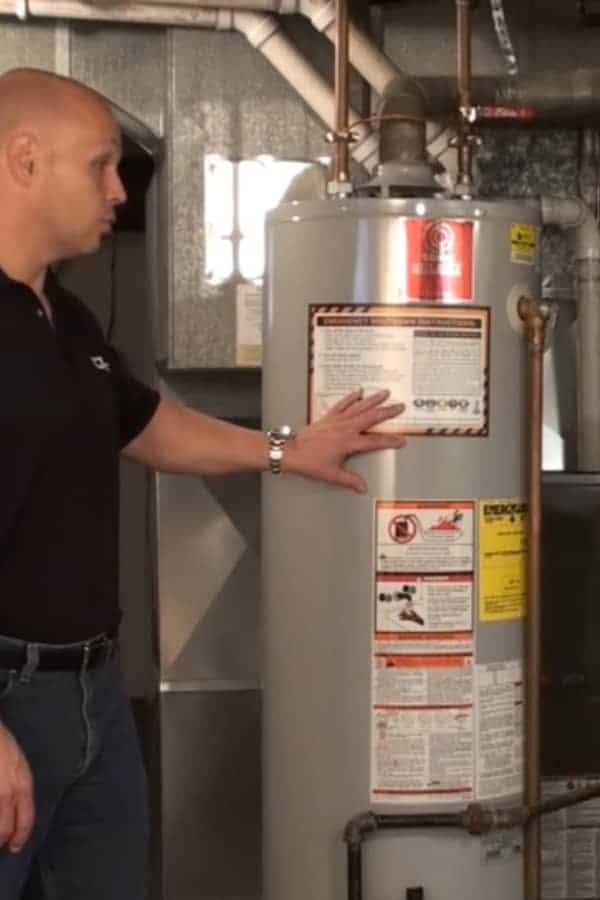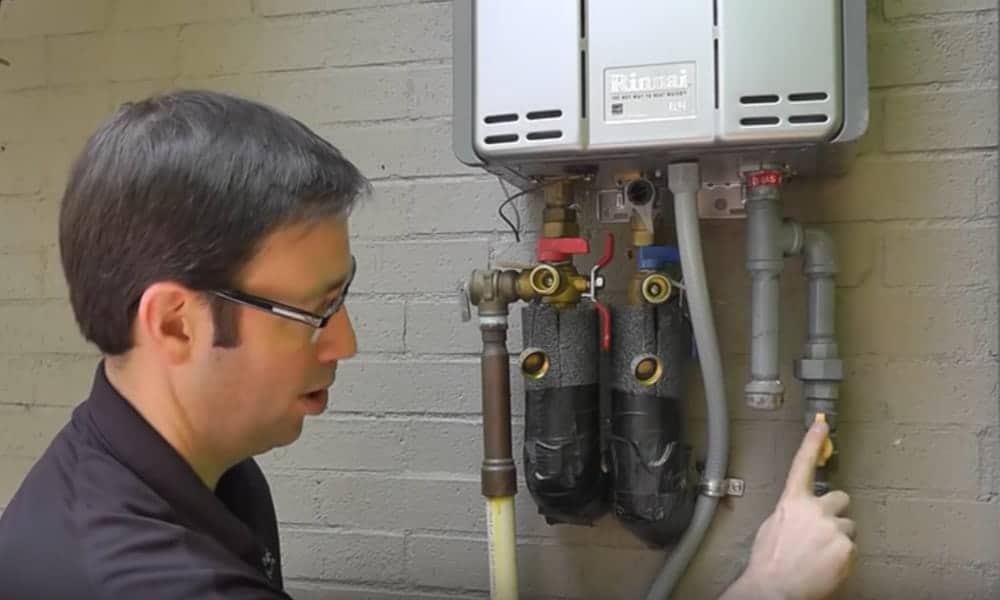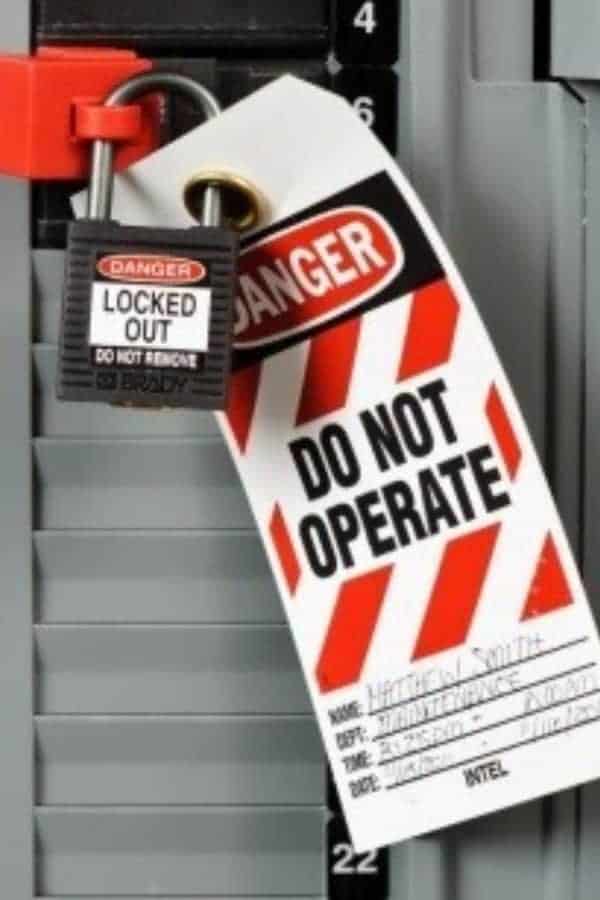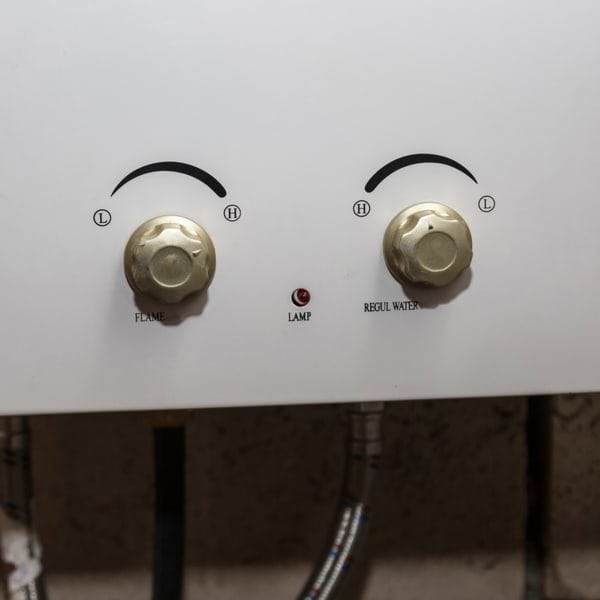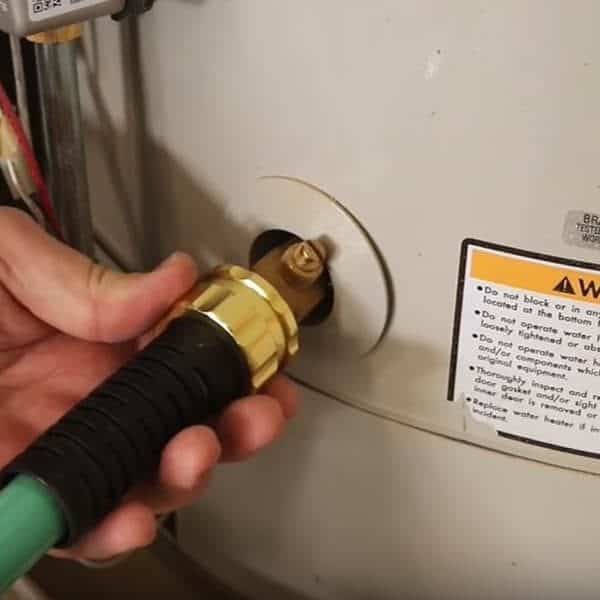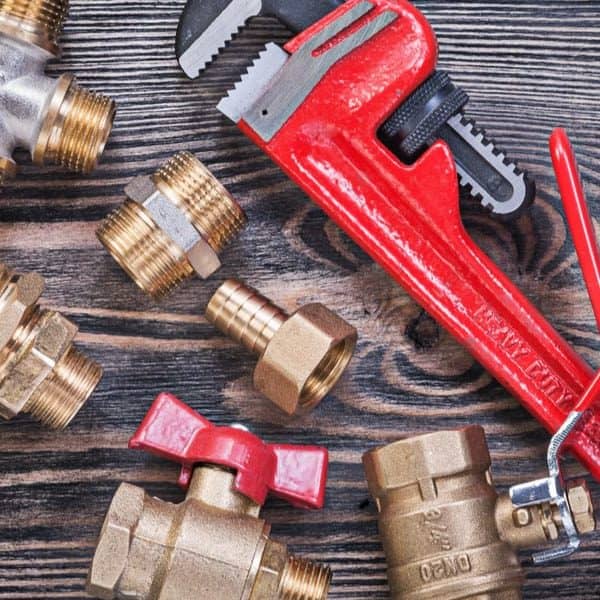Gas or water leak are some of the things that can scare you the most. But that doesn’t always have to be the case if you know how to turn off water heater.
When your digital alarm begins to sound, it’s not the time to panic or do something silly. Even before you a call in a plumber, you need to turn off everything to stop the gas or water leak.
How to Turn Off Water Heater
Overheating, strange noises or other bad signs are indications of danger, and you need to do something fast. So if you want to know how to turn off water heater, follow these simple steps
Step 1. Disconnect from the Power Source
The first step is to go to the power source and disconnect your water heater. If there is an electric unit, make sure you turn off the circuit breaker. For the gas unit, go to the dial close to the thermostat and move it in the other direction.
Step 2. Turn the Water Off
You don’t do this step until you are sure the electricity connected to the water heater is turned off completely. Whether it’s an electric tankless water heater or a propane tankless water heater, they come with different kinds of handles. Some handles are circular, and all you need do to turn it off is to rotate it to the right.
With this action, you open the way for cold water to flow in, and your sink and tubs will not receive hot water. If you don’t find where water is connected to the heater, turn off the water supply for the entire house. Locate the valve close to the meter, open the box, and turn the valve in the other direction.
Step 3. Carefully Drain the Water in the Tank
Check the bottom part of the tank to see where you can connect a hose to drain the water. Insert the end of the hose to a floor drain or a tub until all the hot water flows out. Read the product manual carefully to get any specific information about safety when draining water.
Turning off both power and water supply is the first thing on how to turn off hot water heater. Once this is done, you minimize any potential risk that leakages or broken propane gas water heater can cause. Be very careful when draining the tank to avoid splashes of hot water.
Step 4. Label Your Circuit Breaker
The content of your circuit breaker may be complex and unclear. This will require labeling to make sure you know the original position of each component. When there is an emergency, and you have to shut down power completely, those labels will be helpful.
If you have a circuit breaker already labeled, test each component carefully to determine its function. You don’t want to think it is turned off power when you did not.
Step 5. Practice Shutting Off Water Heater
Most people panic and get confused when their heater leaks or the alarm sets off. The only way to overcome this confusion is to know how to turn off water heater ahead of time. Maintaining the habit of draining your water heater every six months can make you understand the process.
Practice how to turn on or turn off hot water heater supply flowing into the whole house. Learn to open the valve slowly as turning it too quickly can make things worse. If you’re not sure the right way to do it, ask your local plumber for help.
This knowledge also applies when turning off the water flowing to all the appliances in your home. A little regular practice will remove the panic you experience during emergencies. You won’t want to worsen the problem since you don’t know how to turn off water heater when it’s heating.
How to Turn Off a Gas Water Heater
If your home uses a tankless gas water heater, you must understand how to turn off a Gas water heater. Follow these simple ways to do it right.
Step 1: Turn Off the Water Heater Valve
Check the front of the tank, and you will notice a red or black button. Sometimes these buttons are hidden behind insulating materials, and you have to pull it off to reveal the button. Move or turn the switch from the “on” position to the “off” position.
Turning off the heater will stop the pilot from working and the burner from heating. Pull off the heat shield and check inside for signs of heat or flames. If you’re doing maintenance, turn on the pilot, and the flame stays lit, but the burner won’t work.
Step 2: Turn Off the Line that Supplies Gas
If you want to go out and hear the heater making a hissing sound, turn off the gas line valve. Just go and shut off the valve located on the gas line close to the heater. Turn the lever until it is perpendicular to the gas line.
If you can find any valve, trace the gas line until you find a handle that serves as the switch. Gas line valves are often easy to locate, and you don’t need to search for too long. But if you can’t find it, contact a local plumber.
Step 3: Shut Down the Water Heater
If you’re leaving home during winter, ensure you drain the water in the tank so that it doesn’t get frozen. Turn off the heater and wait for 12 hours to allow the water cool down and to avoid getting scalded. To drain your tank, make sure you:
Put a bucket under the pressure relief valve so that water goes directly into the bucket. Open the relief valve to allow steam to escape and then gently release the lever. Insert a hose to the drain valve located right at the bottom.
Pull the hose to the particular spot you want to drain the water. Normally the draining area should be on a higher elevation than the position of the water tank. If you have a garden, it may be a good time to drain the water into your garden.
Turn off the cold water valve and turn on the hot water faucets to let the water out. Keep the drain valve open until all the water runs out and then close it.
Next, turn off all the open faucets in the house. If the water doesn’t drain, it could be that mineral deposits have blocked the drainage channels. Shut off the valve and then pull off the hose to clear out all deposits. Reattach the hose and turn on the valve once again.
How to Turn Off an Electric Water Heater
The following five steps are useful in shutting down your electric water heater. Follow the guidelines and learn how to turn off water heater in your home.
Step 1: Turn Off the Breaker
The first thing about how to turn off water heater electric is to locate the two-pole breaker. It is about 30 or 50 amps and usually marked.
You should turn off the power at the breaker panel even if you have shut down the electric water heater. If the breaker has lock-out lugs, put them on the breaker.
If you feel you might get confused, label the breaker with paper tape to warn against mistakes. It is also a good idea to tell everyone in the house what you are up to at that moment. They should avoid going near the service panel or the water heater until you are through.
As a way of precaution, use a non-contact voltage tester to make sure there is no heat inside the cover. It is risky to expose yourself to shock or heat when replacing the water heater element.
Step 2: Put a Tag on the Breaker
Safety standards demand that you put a tag on what you are working on to avoid getting anybody hurt. When you are dealing with electricity, it is wise to lock the area off to keep off potential victims. Tag the place and the equipment to warn anyone who may mistakenly walk close to the spot.
In the home, shutting down the breaker isn’t enough as everyone is exposed to similar danger. It will serve well if you put some identification and restriction in place to warn family members of potential dangers. While you may not copy construction site protocols, you have to make sure everyone is safe.
Don’t take the idea of safety as a joke since single electrocution can take a life. Take practical steps to make sure you cut off power completely from the heater and the breaker.
Another way to maintain safety is to put paper tape on the breaker and mark it “Do Not Touch.” Anyone who reads the warning will stay away from the danger.
Step 3: Cool Off the Water
You will need to cool off the water in the tank before you make any repairs. It is good to turn off the heater to stop the water from further heat. Allow the water to naturally and gradually cool off on its own.
Do not attempt to add cold water to help in cooling down the water. Just turn on a faucet in the house and allow it to run fully. If the water feels lukewarm after some time, then it is safe to start your repairs.
Once the repair is done, turn on the heater and allow the water to heat up normally. Give an hour before using hot water for shower, laundry, or dishwashing anywhere in the home.
Step 4: Turning Water Off
Water tanks should always have a shut-off valve on the outlet outside the home. The location of the tank prevents it from building excessive internal pressure. Turn off your cold water supply when working on the hot water tank.
If your tank has two valves, find the one which brings in cold water and turn it off. It is usually the valve on your right when you stand facing the tank. Normally, two valves shouldn’t be found on a supply line, so be careful while doing it.
If water is running through the pipes, feel them with your hands. The cold line is for cold water while the hot pipe is for hot water.
You can decide to turn on a water faucet in the house. The one that vibrates as water rushes out is the hot water supply line. Put a label on the cold line to remind yourself which valve should remain locked.
Step 5: Drain the Hot Water Tank
As you begin to understand how to turn off hot water heater supply, you’ll discover a few facts. You can carry out some activities without draining the water tank. If you are adjusting or testing the thermostat or checking the power supply unit, you may leave the tank full.
Activities like removing or changing the element or flushing sediments require you drain the water first. The buildup of deposits can affect the heating of water in the lower part of the tank. Turn off the heater and allow the water to cool down before draining and repairs.
Wrap Up
As you can see, turning off water heaters of any kind has never been as easy. The only requirement is to learn how to turn off water heater. Yes, it is as simple as that.
If you have a similar or different experience, share them with us in the comment section. We’ll be glad to learn from your personal experience.
Always keep in mind the summary of the steps mentioned in this article:
- Turn off the water heater
- Shut down power from the circuit breaker
- Turn off the water supply
- Make your repairs and
- Switch water back on
